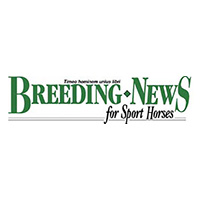By authorship credits can be found at the end of this article
Photography: Anne Courencé
A total of 752 horses were involved in the CES Valencia Spring Tour 2021. Due to an equine herpesvirus-1 (EHV-1) outbreak, the competition was cancelled and the site was locked down. The objective of this study was to describe epidemiological, clinical, diagnostic and outcome data of the 160 horses remaining in Valencia.
Clinical and quantitative polymerase chain reaction (qPCR) data were analysed for 60 horses in a retrospective case-control observational study. The risk of developing clinical manifestations was explored using a logistic regression approach. EHV-1 was detected by qPCR, genotyped as A2254 (ORF30) and isolated on cell culture.
From the 60 horses, 50 (83.3%) showed fever, 30 horses (50%) showed no further signs, and 20 (40%) showed neurological signs, with eighht horses (16%) hospitalised, of which two died (3%).
Stallions and geldings were six times more likely to develop EHV-1 infection compared to mares. Horses older than nine years, or housed in the middle of the tent were more likely to develop EHV-1 myeloencephalopathy (EHM). These data show that for EHV-1 infection, the risk factor was male sex. For EHM the risk factors were age >9 years, and location in the middle of the tent. These data highlight the crucial role of stable design, position, and ventilation in EHV-outbreaks. It also showed that PCR testing of the horses was important to manage the quarantine.
Introduction
Equine herpesvirus-1 (EHV-1) is an important, ubiquitous equine viral pathogen that manifests as respiratory disease in young horses, ocular diseases, abortions in pregnant mares, early neonatal death in foals, and myeloencephalopathy (EHM)[1]. Although EHV-1 myeloencephalopathy (EHM) is a relatively uncommon manifestation of EHV-1 infection, it can cause serious losses and severely impact the equine industry, as exemplified by reported outbreaks at riding schools, racetracks, horse shows, and veterinary hospitals throughout North America, Europe, and New Zealand[2][3][4][5][6]. These different outbreaks have been clinically and epidemiologically described[3][4][5][6][7][8]. Factors influencing the onset of infection are the viral load, the local immunity in the respiratory tract, and the application of biosecurity measures[3,6]. The viral load is linked to the efficacy of biosecurity measures[8]. Development of viremia may also be influenced by strain differences[9]... To read the complete article you need to be a subscriber
CLICK HERE TO SUBSCRIBE TO BREEDING NEWS
SUBSCRIBERS CAN READ THE COMPLETE ARTICLE BY LOGGING IN AND RETURNING TO THIS PAGE




